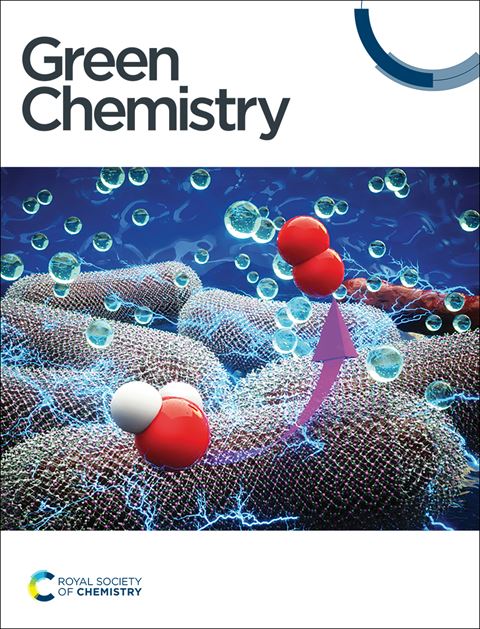The sustainable and catalytic synthesis of N,N-alkylated fatty amines from fatty acids and esters†
IF 9.3
1区 化学
Q1 CHEMISTRY, MULTIDISCIPLINARY
引用次数: 0
Abstract
The reductive amination of fatty acids (FAs) and fatty acid methyl esters (FAMEs) has been identified as a green and effective method to produce N,N-dimethylalkylamines (ADMAs). With current technology, this reaction requires at least two reaction steps. Here, we report a heterogeneous catalytic system for the one-pot synthesis of ADMAs from FA(ME)s, utilizing solely H2 and methylamines (i.e. di- and trimethylamine). The reaction requires two recyclable catalysts: ortho-Nb2O5 for the amidation of FA(ME)s and PtVOx/SiO2 for the hydrogenation of the in situ generated fatty amide to ADMAs. The developed system has a wide range of applicability: it is able to convert all natural FAs to ADMAs (yields up to 90%) and also other tertiary amines were synthesized. Aside from the development of a sustainable and industrially applicable process (e.g. utilizing benign solvents or performing solventless reactions), a kinetic model was developed that describes the reaction rate's relationship with key process parameters such as the H2 pressure and water content. By tuning the reaction conditions, different ratios of primary, secondary and tertiary fatty amines can be obtained.
求助全文
约1分钟内获得全文
求助全文
来源期刊

Green Chemistry
化学-化学综合
CiteScore
16.10
自引率
7.10%
发文量
677
审稿时长
1.4 months
期刊介绍:
Green Chemistry is a journal that provides a unique forum for the publication of innovative research on the development of alternative green and sustainable technologies. The scope of Green Chemistry is based on the definition proposed by Anastas and Warner (Green Chemistry: Theory and Practice, P T Anastas and J C Warner, Oxford University Press, Oxford, 1998), which defines green chemistry as the utilisation of a set of principles that reduces or eliminates the use or generation of hazardous substances in the design, manufacture and application of chemical products. Green Chemistry aims to reduce the environmental impact of the chemical enterprise by developing a technology base that is inherently non-toxic to living things and the environment. The journal welcomes submissions on all aspects of research relating to this endeavor and publishes original and significant cutting-edge research that is likely to be of wide general appeal. For a work to be published, it must present a significant advance in green chemistry, including a comparison with existing methods and a demonstration of advantages over those methods.
 求助内容:
求助内容: 应助结果提醒方式:
应助结果提醒方式:


